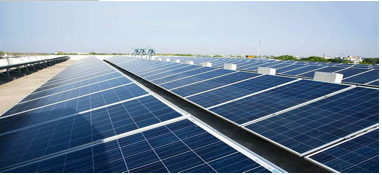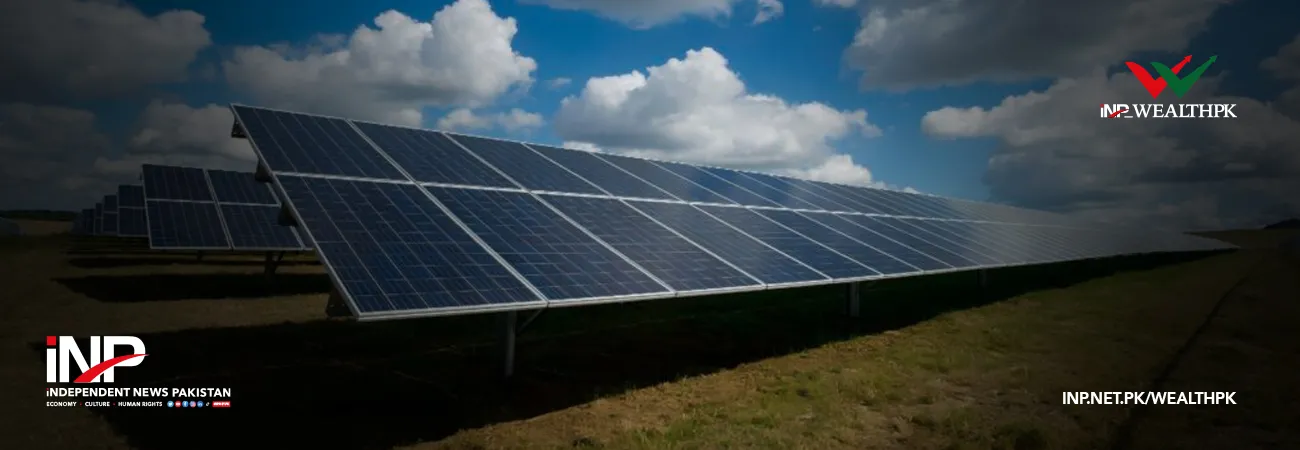i INP-WEALTHPK
Amir Saeed
A tiered solar subsidy system is essential for ensuring equitable access to the solar energy to promote a more balanced and sustainable energy ecosystem in Pakistan, Dr Khalid Waleed, Research Fellow at the Sustainable Policy Development Institute (SDPI), told WealthPK.

He highlighted that the National Electric Power Regulatory Authority (Nepra) had provided various solar energy options under its net metering system, allowing the consumers to feed surplus electricity back into the grid. The first category under this system is net-metered solarization aimed at higher-capacity consumers. These consumers, generally with a higher demand for electricity, are allowed to generate up to 1MW of solar power and feed the excess energy back into the grid. “This offsets their electricity bills and contributes to the grid, benefiting the individual consumers and the national power system. However, this approach does not sufficiently address the demands of smaller, low-income consumers, even if it offers substantial incentives for larger solar adopters.” He pointed out that a significant yet overlooked category of solar consumers consisted of single-phase non-net-metered solar users.
These consumers primarily use the solar power for daytime consumption, typically in rural and lower-income urban areas. They are not permitted to feed extra energy back into the grid under the existing restrictions. “This is because Nepra’s distributed generation rules limit these consumers’ capacity to produce and sell excess electricity to the utility. Many consumers use battery energy storage devices to store extra energy generated during the day to be used at night or during cloudy conditions, rather than taking advantage of net metering.” He explained that the battery storage solution came with extra expenses, especially for the lower-income households that could find it difficult to pay for these systems. This is where tiered solar subsidies could play a vital role. By providing subsidies to the single-phase non-net-metered consumers, the government can provide them with affordable access to the solar energy without the need for expensive energy storage solutions.
“These subsidies would lower the initial installation costs and make the solar power more accessible to the average household, ultimately improving energy access for poorer consumers who rely heavily on the grid for their electricity needs.” Talking to WealthPK, Zeeshan Ashfaq, CEO of Renewable First, said technological advancement in solar inverters was also helping bridge the gap between the net-metered and non-net-metered consumers. Single-phase inverters, now available in the market, allow the consumers to reduce their daytime energy consumption to nearly zero without a battery storage system. “These inverters are designed to optimize solar energy use during the day, making it possible for the users to cover their daytime consumption entirely with the solar power, minimizing their reliance on the grid electricity.
However, while this innovation significantly reduces the electricity bills of such consumers, it does not allow them to benefit from the same incentives that larger net-metered users enjoy.” He suggested that the government should assist the single-phase consumers by implementing tiered subsidies. Those who use the technology to offset their energy consumption would be eligible for a specific tier of subsidies based on their level of solar adoption. “This would promote further solar adoption while acknowledging that the smaller consumers contribute to the overall reduction in national grid demand. Furthermore, this system would prevent these lower-income consumers from being left behind as the solar technology evolves, ensuring that they receive equitable access to the renewable energy resources.”
Credit: INP-WealthPk




